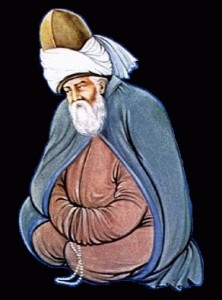Saints leading the way
Mother Theresa, Mary McKillop, Rumi , Nayanmars, Guru Nanak, Swami Ramakrishna Paramhans
By Kanaka Ramakrishna
The recent event of canonisation of five saints including Mary MacKillop from Australia, a great event in the catholic world, raised a lot of interest. Along with it the fundamental issues and questions arose as a result of the event ”“ ”˜who is a saint?’ and ”˜what makes one a saint?’ Is a saint made or born?
Every religion in the world has produced a large number of saints. In the middle of wars and bloodshed, carnage and destruction, acts of gross sensuality and greed, which fill the barren plains of human history, the great saints of the world religions are like oases. These saints deriving their inspiration from the original prophets tried to carry the message of love, service and devotion to God to common people. It is the silent work of these saints through centuries that has enabled humanity to maintain its culture without falling down to the brutish level.
All the great religions of the world recognise the possibility of higher spiritual experience in this life, though the theologians try to understate its importance. However, a number of great mystics in all the world religions have attained the mystical experience of oneness with the Godhead and have enjoyed supreme peace and beatitude even while alive in this world. Broadly speaking, asceticism, contemplation, righteousness, devotion, dedication and love – seem to be the most likely factors considered in general to be essential for sainthood.
If a religion has an established institutional authority, it could determine and apply a set of criteria for sainthood. In the Roman Catholic Church, the title ”˜saint’ refers to a person who has been recognised by the Church after canonisation, which takes place after the death of the person. The process involves recognising ”˜miracles’ in the person’s life after which the person is ”˜beatified’ and then ”˜canonised’ by the Church. Saints are recognised following a long juridical process in which evidence of miracles is solemnly examined.
Jacqueline Maley is critical of the process and says, ”˜as though even God’s works need to stand up to some form of contemporary enquiry’. Catholics believe that saints are intermediaries between God and man. Saints are not worshipped but prayed to help the suffering. Protestants reject the practice of venerating saints. They also reject praying the intermediaries.
As a corollary, a question arises ”“ what is the place and power of prayer in the process of healing? Prayer by itself may be a good thing. It can bring comfort, hope and optimism which itself may have therapeutic health benefits. Meditation may also benefit the mental health. If individuals pray with faith and devotion, it may cause miracles on account of their own strong faith and belief and not necessarily because of the intermediary.
Apart from the disciples of Jesus Christ, Christianity had a number of mystics and saints. The earliest mystic was St. Paul who lived in 3rd c A.D. In his young age he violently opposed the Christian religion but, after a wonderful spiritual experience, he became one of the great Christian mystics and a saint.
Another great mystic, St Francis of Assisi, who spent his younger days in merry-making but, after a prolonged illness, he embraced spiritual life and became totally detached to the world. He dedicated his life completely to the divine, enjoying inner peace and bliss.
Another saint, Brother Lawrence, who practiced the presence of God even while engaged in the ordinary duties of the kitchen, attained a high degree of spiritual enlightenment. There are many others like St. Ignatius Loyola, St. Theresa of Avila, St. John of the Cross etc. who are famous among the Christian saints.
Life was not easy for these mystics and saints, especially in the middle ages. They all ran the risk of being branded as Devil’s media and being burnt at the stakes. The common characteristic of all these realized persons was the inner freedom and bliss they all enjoyed, even when living within the narrow walls of church life, without getting their soul constrained by its sectarian views.
Though by and large Islam is anti-monastic and anti-mystical religion, yet it produced a number of great saints during middle ages. Islamic mystics are called ”˜Sufis’. One of the earliest among them was a woman, Saint Rabia of Basra. One of the greatest Sufis was Mansur-al-Hallaj. He started preaching his most fundamental doctrine “I am the reality”, which is similar to the Indian Vedantic teaching. The outraged Muslim theologians got him tried, tortured and executed him in a barbarous way. But his ideas about the divinity of soul and the possibility of attaining unity with the Supreme Divine, influenced later islamics for several centuries. There were other famous sufis like Jalal-al-din Rumi, a great poet and mystic, Dara Shuko, etc.
In Theravada Buddhism, the ”˜arahant’ represented the ideal of sainthood. But in Mahayana Buddhism, the Bodhisatva supersedes all others as he is considered to manifest purity and heroic virtue. His path comprised stages that blend the aim of attaining his own enlightenment and securing the enlightenment for all beings. This is also the aim and purpose of great souls in Hinduism who have reached to the status of a ”˜saint’. Confucian tradition is similar to that of Mahayana Buddhism and the ”˜sage’ is to work for the improvement of humanity and for the elimination of suffering.
Buddhist and Hindu saints attain wisdom through spiritual practices and meditation. They conquer spiritual hindrances by following a disciplined and pure life and accomplish liberation and release from suffering and the cycle of re-birth. As a result of intense spiritual practices, they may possess miraculous powers. This applies to all the saints in the world irrespective of their religions.
In India, Hinduism is the woof and warp of Hindu life. It is said, ”˜India is the body and Hinduism is the soul’. Hence it is indestructible, eternal and dynamic. Hinduism underwent many changes over the centuries, but the fundamental principles of Hindu religion like the doctrines of Atman and Brahman, God realization as the goal of life, the law of karma, the theory of cyclic evolution and involution of the universe, etc. are the soul of Hinduism and the practical application of these principles in life forms its body. The outer body goes on changing from time to time, but the soul remains unchanged.
The history of Hinduism is studded with saints and avataras with no clear line of demarcation between them. In spite of centuries of foreign rule and resulting fragmentation of the country, there was always the unity of Hindu culture. If Hinduism is alive and vibrant today, it is mainly because of the contribution made by the saints, the venerable souls. Call them Indian Holymen or Hindu monks or seers or saints or rishis or babas or sadhus ”“ they are at the centre of Indian spirituality.
The great spiritual teachers and realized souls like Sankara, Ramanuja and Madhva reinstated the ancient principles of the Hindu religion in the post Buddhistic period and during the early period of the Muslim rule in India. These saints came from various strata of society, related to the common people in their local dialects and preached the love of God (bhakti) as the chief means of salvation.
In the South, the earliest groups of saints who rose during the post Buddhist era were a group of Tamil saints known as Alvars who were the worshippers of Vishnu. The famous among them were Thirumangai Alvar, Kulashekara Alwar and a woman saint, Andal, whose devotional hymns are sung even today. The works of theAlvars established the supremacy of Bhakti.
Another group of saints in the South was the Nayanmars whose images are found in all the Shiva temples in the South. Sundarar, Manikyavachakar and Appar are some of the great saints whose writings are called devaaram and Tiruvaachakam, sung even today in all Shiva temples in the South. The line of Saiva saints has been maintained unbroken to the present day. Besides these tamil saints, there were other saints in the South like Purandaradasa, Thyagaraja, Basavesvara, Akkamahadevi and others.
In Maharashtra, many saints like Namadeva, Jnanesvara, Ekanath, Tukakkram, Ramadas and others including some women saints. All these saints propagated the message of love and self-surrender to God in simple local languages.
Though North India was ravaged by invaders of different races, Hindu religion survived because of the great saints who conveyed to the common people the message of the religion based on Bhakti. Some of the great saints were Ramananda, Kabir, Nanak and Tulsidas. For the last three hundred and odd years, the writings of these great saints have shaped the moral and spiritual lives of millions of people in India. Tulsidas’s Ramacaritamanas is highly devotional and popular even today.
There were other saints like Mirabai and Surdas. Mirabai is the most famous woman saint of India who lived the life of utmost renunciation and divine realisation. Her songs are heart-rending and highly devotional.
Sri Krishna Chaitanya is another great saint from Bengal who influenced people by his message of devotion to Lord Krishna. He is considered to be a stalwart in the Vaishnava movement in the North. Ramprasad and Kamalakanta were other two saints who popularised the Mother worship and their poems are a source of great inspiration to spiritual seekers.
In the modern era, some of the great disciples of Sri Ramakrishna, who is considered to be an Avatara, form a class of great saints. They were the unique blend of ancient spirituality and modern social awareness; fusion of the best from the east and the west. Their love for man was an expression of their love for God for they had realized the Divinity in all living beings. The greatest among them was Swami Vivekananda, who had attained the highest state of spiritual experience, was recognised by his master as the ever-perfect soul, born for the spiritual rejuvenation of India and the welfare of mankind.
”˜Every part of India has produced saints of great spiritual eminence. Through their lives, teachings and songs and through their organised followers, these great saints have made Hinduism a living faith adapted to the changing times.
”˜When we study the lives of saints belonging to other religions, we come to the same conclusion. Saints of world-religions belong to the same class. They speak the same truth, though in different languages. Let us fulfil our lives by following the footprints left by these great souls.
Short URL: https://indiandownunder.com.au/?p=382






